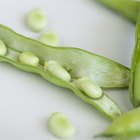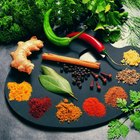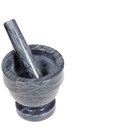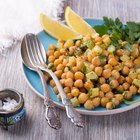
Sebalos/iStock/Getty Images
As more and more people become wary of the negative effects of too much sodium, the food production industry has reacted by creating salt substitutes. Potassium chloride is often used in place of sodium chloride to add flavor to food; however, some people must limit their intake of this mineral because they are at risk for developing high potassium levels. Herbs, spices and low-sodium seasoning options are appropriate alternatives.
Reasons to Avoid Potassium Chloride
The Food and Nutrition Board of the Institute of Medicine established an adequate intake for potassium of 4,700 milligrams per day. Taking in less than this amount may be appropriate for people at risk for developing high levels of blood potassium, or hyperkalemia, such as those with impaired kidney function or those taking medications that impact potassium regulation. There is currently no upper limit established, but intake above 18 grams at one time may lead to hyperkalemia in healthy people. Effects of hyperkalemia include tingling in the hands and feet and muscle weakness, and in more extreme situations, irregular heart rhythm and cardiac arrests.
Types of Salt Substitutes
Many salt substitutes use potassium chloride in place of sodium chloride because it provides a similar taste. Often, the substitutes contain this ingredient with little else. Other options are marketed as salt alternatives or salt blends and contain less sodium than traditional table salt. These products are typically blended with other spices so that the sodium is diluted and can be an acceptable option if you use only a small amount. Other salt substitutes use a mix of herbs and spices that are often finely ground to provide flavor without sodium or potassium chloride. These mixtures are the ideal option for people who want to limit intake of sodium and potassium.
Using Herbs and Spices
Herb and spice mixtures are the safest choice to avoid sodium chloride and potassium chloride. Some dried and ground seasoning blends that don't contain sodium or potassium chloride are marketed as salt substitutes and can be found in the spice aisle in the grocery store. Alternatively, you can make your own seasoning blend to add flavor to food. Try garlic or garlic powder, onion powder, lemon, cumin, black pepper, tarragon, oregano or fresh herbs.
Alternative Options for Flavor
Nutritional yeast, which is an inactive yeast that is grown on molasses, has a savory nutty flavor and can help add flavor without sodium. Nutritional yeast contains some potassium, about 320 milligrams in 2 tablespoons. This is comparatively less than most salt substitutes that contain potassium chloride, which can contain more than 600 milligrams of potassium in 1/4 teaspoon. Flavored oils and vinegars are another option to add flavor to marinades, dressings or dips.
Related Articles

Low-Potassium Salt Substitutes

Nutritional Facts of Fava Beans

What Is Accent Seasoning?

Salt Vs. Non-Iodized Salt

Side Effects of Monosodium Glutamate

The Disadvantages of Saccharin

Alum as an Ingredient in Wrinkle Cream

Difference Between Canned Pumpkin & ...

Salt-Free Diet Menus

Herbs That Contain Zinc

Sodium in Chips

Can I Replace Cumin With Chili Powder?

How to Finely Grind Celtic Sea Salt

Does Benefiber Lower Cholesterol?

How to Make Electrolyte Water With Salt ...

L-Lysine for Hair Growth

How to Make Salt Brine

Arginine for Hair Growth

Garbanzo Beans on the Glycemic Index

How to use Nutritional Yeast for Soups
References
Writer Bio
Susan Thomas is a Registered Dietitian who has worked with a variety of health conditions in a high volume acute care hospital, in dialysis clinics and through preventative nutrition counseling and seminars. She completed bachelor's and master's degrees in nutrition and dietetics at the University of Pittsburgh.
Photo Credits
Sebalos/iStock/Getty Images